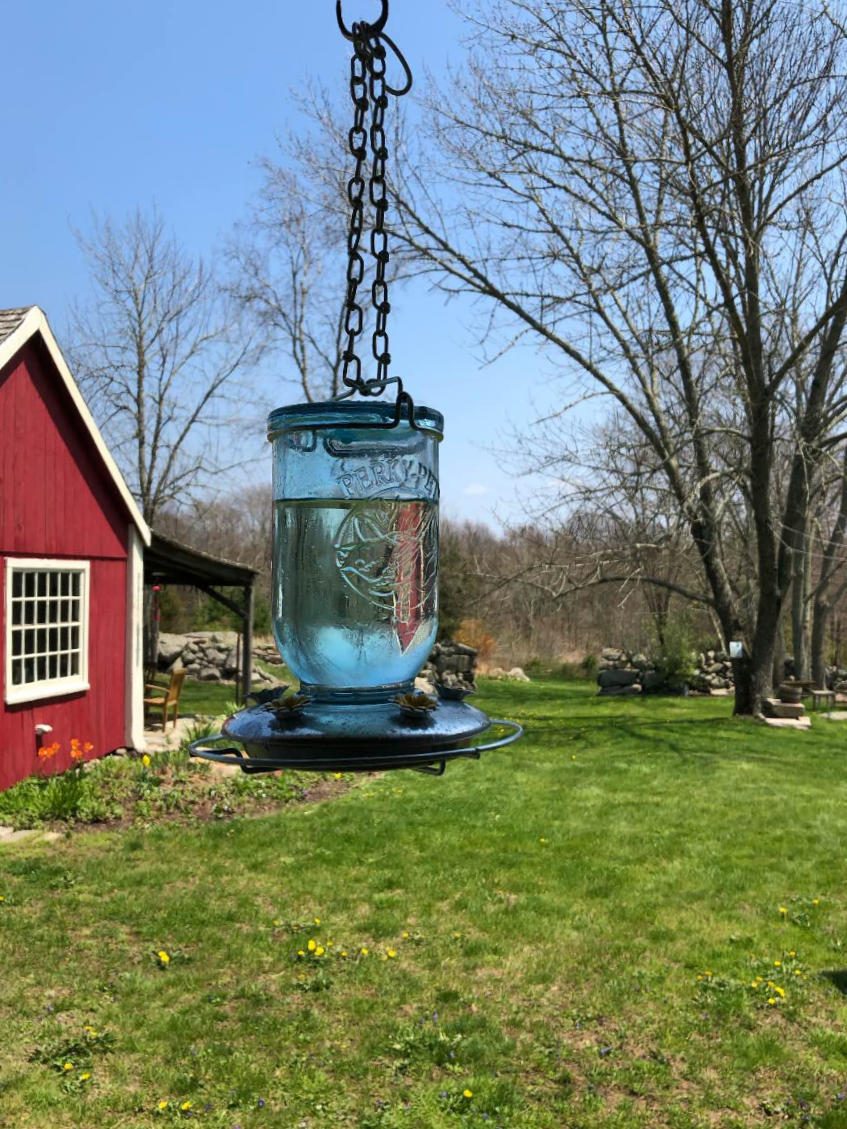One of the best things we can add to our gardens is add plants and feeders that support the important work of pollinators. Not only do these look beautiful with their bright cheery blooms, they support the important work of pollinators – creatures that help move pollen from male to female plants, fertilizing them.
Bees
I sometimes think about how bees have hired the best PR firm in the business. Gone are the days when we tried to avoid them and keep them away from our shared outdoor space – now we’re building environments to invite them in!
There are lots of flowers that attract bees to your yard – peonies, pansies, lavender – dandelions, even! If you are planning a bee garden, choose flowers that with bloom at different times during spring and summer, to give them sustenance over several months. Avoid using insecticides, herbicides and pesticides that might harm the bees. Hybrid plants (like some kinds of lilies and Meyer lemons, for example) are also less beneficial for bees, so if you’re buying plants from a nursery, talk to them about how the plants have been treated prior to purchase.
You may have heard of people putting bee houses in their yards too, but many experts warn that most of these store-bought bee houses are dangerous for bees, because they can’t be cleaned and attract mold and mites. If you are thinking of adding a bee house in your garden, do your research and find a bee house that has removable pieces that can be cleaned.
Butterflies
Like bees, butterflies will be attracted to bright, beautiful blooms. Flat topped flowers, like Achillea, spiky flowers and cone-type flowers like Echinacea are all butterfly favorites. But you will also need to think about keeping and supporting the butterflies. Planting native species of plants will give butterflies a place to reproduce and making sure there is plenty around for caterpillars to eat is part of the planning process too. Caterpillars feed on tree leaves like oak, poplar, birch and apple, but they also like dill, milkweed, clover and, like bees, dandelions. You will want to make sure you’re supporting the entire life cycle of the butterflies. And again, avoid using pesticides that will kill these beautiful visitors.
Hummingbirds
Does the sight (and sound) of hummingbirds ever get old? These wonderful little birds are also efficient little pollinators, and who would not want more of them in their garden?
You have likely seen hummingbird feeders in many gardens, and if you have one or are thinking of adding one, make sure that you are using a dye-free, safe nectar for them. You don’t need red, colored hummingbird food, you just need sugar and water. This recipe comes from the National Zoo:
You will also need to clean them regularly and thoroughly. You may want to get multiple feeders, so you can thoroughly wash each one between uses so that mold does not accumulate.
If you would like to plant flowers to attract hummingbirds; look for bright, colorful blooms with tubular shapes. Plants like Bee Balm, Salvia, Zinnias, Bleeding Heart and Butterfly Bushes are all great choices. Hummingbirds are not attracted to the smell of flowers and food as much as they are attracted by color, so planting a hummingbird-friendly garden will provide a beautiful, colorful scene.
Other unlikely (and sometimes unliked) pollinators
It’s not just the beautiful creatures that make great pollinators. Moths are nighttime pollinators, and some types of bats, especially in desert and tropical climates, are also great nighttime pollinators, picking up pollen on their hair as they eat moths and insects snacking on flowers. And if you don’t live in a desert or tropical climate, bats are our great allies in the war against mosquitos. Consider adding a bat house to your garden to give them a safe place to spend their sleeping hours.
Always remember: no matter what type of pollinator you'd like to welcome to your yard, using chemical herbicides, pesticides and insecticides will only harm them and other important members of the natural ecosystem. Look into natural remedies, including insect-deterring plants, to keep your garden safe for everyone.

